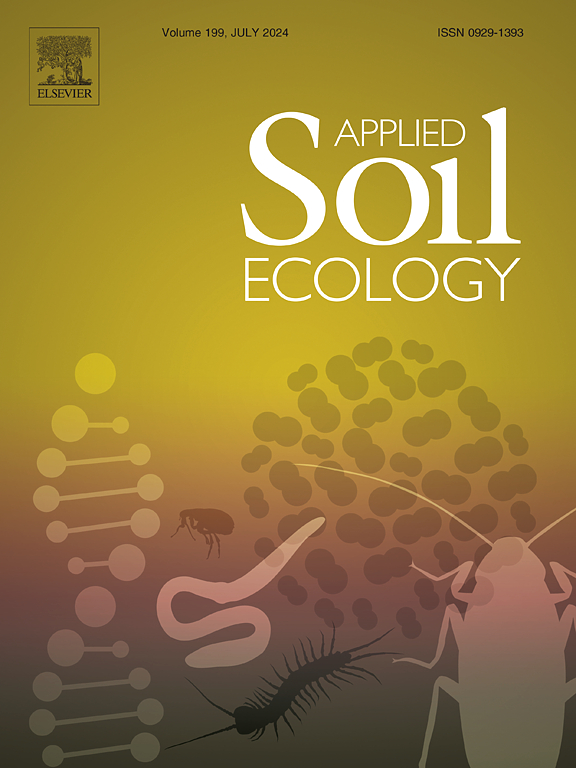Bradyrhizobial peanut inoculant competitiveness is associated with rhizosphere microbiota
IF 5
2区 农林科学
Q1 SOIL SCIENCE
引用次数: 0
Abstract
Inoculating legumes with selected rhizobial inoculant strain(s) to promote legume growth affects rhizosphere microbiota, yet the effects of inoculation vary. We isolated rhizobia from peanut root nodules collected across Sichuan, China, assessed their symbiotic performance in greenhouses and at two field sites with different soil types and climates, determined their competitiveness against native strains using rpoB amplicon sequencing, and assessed inoculation-related differences in peanut rhizosphere bacterial and fungal communities using 16S rRNA gene and ITS amplicon sequencing. Four of the eight strains utilized as inoculants in the field experiments were competitive against native soil rhizobia. The differences in structure and taxonomic composition of rhizosphere bacterial and fungal communities were mostly noted between the sites. The number of differentially abundant rhizosphere genera was greater at the site with no prior peanut cultivation history than at the site in the traditional peanut cultivation areas. In the latter, differentially abundant genera were detected only in treatments where the inoculants were enriched in peanut nodules. The results provided minor support for the hypothesis that competitive inoculants would affect rhizosphere communities more than uncompetitive and ineffective inoculants, and that the effects of inoculation would be larger at a site with no peanut cultivation history. However, differences in the rhizosphere microbiota were likely to depend more on the local microbiota or soil conditions than on inoculation.
缓生根瘤菌花生的接种竞争力与根际微生物群有关
用选定的根瘤菌接种菌株接种豆科植物促进豆科植物生长会影响根际微生物群,但接种效果各不相同。我们从中国四川花生根瘤中分离出根瘤菌,评估了它们在温室和两个不同土壤类型和气候条件下的共生表现,利用rpoB扩增子测序确定了它们与本地菌株的竞争力,并利用16S rRNA基因和ITS扩增子测序评估了接种相关花生根际细菌和真菌群落的差异。在田间试验中,作为接种剂的8株菌种中有4株对本地土壤根瘤菌具有竞争性。不同立地间根际细菌和真菌群落的结构和分类组成主要存在差异。无花生栽培史的立地差异丰富根际属数量大于传统花生栽培区立地。在后者中,只有在接种剂富集于花生结节的处理中才检测到差异丰富的属。本研究结果为竞争性接种剂对根际群落的影响大于非竞争性和无效接种剂的假设提供了少量支持,并且在没有花生栽培历史的地点接种效果更大。然而,根际微生物群的差异可能更多地取决于当地微生物群或土壤条件,而不是接种。
本文章由计算机程序翻译,如有差异,请以英文原文为准。
求助全文
约1分钟内获得全文
求助全文
来源期刊

Applied Soil Ecology
农林科学-土壤科学
CiteScore
9.70
自引率
4.20%
发文量
363
审稿时长
5.3 months
期刊介绍:
Applied Soil Ecology addresses the role of soil organisms and their interactions in relation to: sustainability and productivity, nutrient cycling and other soil processes, the maintenance of soil functions, the impact of human activities on soil ecosystems and bio(techno)logical control of soil-inhabiting pests, diseases and weeds.
 求助内容:
求助内容: 应助结果提醒方式:
应助结果提醒方式:


